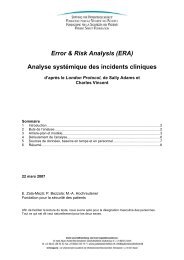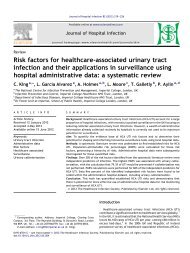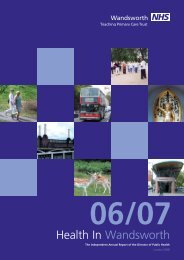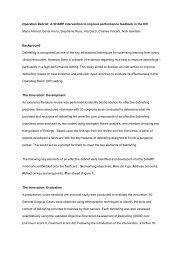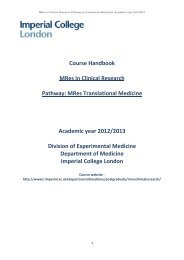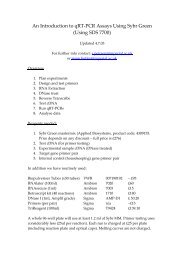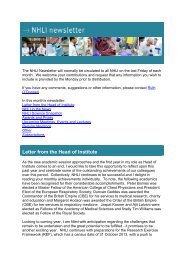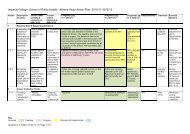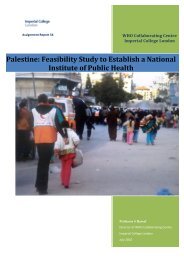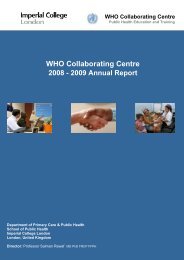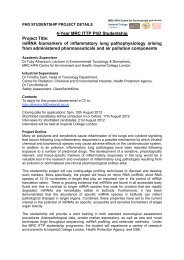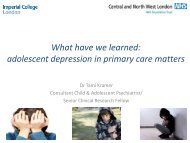QOF Plus Year 1 - Imperial College London
QOF Plus Year 1 - Imperial College London
QOF Plus Year 1 - Imperial College London
Create successful ePaper yourself
Turn your PDF publications into a flip-book with our unique Google optimized e-Paper software.
Local contextThe Hammersmith and Fulham Public Health Report 2007/8 (Zeuner, 2008) states that:“It is estimated that 5.7% of adults aged 15-64 in Hammersmith and Fulham (7,300people) have an alcohol dependency, which is the highest prevalence in <strong>London</strong>.Hammersmith and Fulham has a particularly high prevalence of hazardous and harmfuldrinking. It is estimated that around 36,000 adults (25%) in Hammersmith and Fulhamconsume hazardous amounts of alcohol, and a further 10,000 adults (7%) consumeharmful amounts of alcohol. Given the socio - demographic characteristics of thepopulation, it is expected that approximately 16.4% (CI: 13.8% - 19.3%) of adults bingedrink (around 24,000 adults). Hospital admission rates for alcohol-specific and alcoholattributableconditions are high in Hammersmith and Fulham, particularly among males.Mortality rates for alcohol-specific and alcohol-attributable conditions are high inHammersmith and Fulham, particularly among males. The alcohol-specific mortality rateamong males is one of the highest in England. The mortality rate from chronic liverdisease among males in Hammersmith and Fulham is also one of the highest in England”.Review of evidence to support the proposed indicatorsThere is a significant amount of evidence supporting the effectiveness of opportunistic casefindingfor alcohol misuse and the delivery of brief interventions (Moyer et al., 2002). The resultsof many of the large-scale systematic reviews and meta-analyses are summarised in an evidencebriefing by the Health Development Agency (2005) and in the Scottish Intercollegiate GuidelinesNetwork (SIGN) guidelines. Strong evidence for the effectiveness of brief alcohol interventions inprimary care populations is also provided by a recent Cochrane Collaboration review (Kaner et al.,2007).The CAGE screening questionnaire was validated in 1974 and is the most widely used test inclinical practice (Smart et al., 1991). However, research by Aertgeerts et al. (2001) found that itwas not sufficient as a screening instrument for detecting alcohol misuse or dependence amongprimary care patients.The AUDIT was developed by the World Health Organisation (WHO) as a simple method ofscreening for excessive drinking (Saunders et al., 2003). AUDIT takes 5 minutes to complete, canbe administered through a brief, structured interview or a self-report questionnaire, and has asensitivity of 92% a specificity of 94% (Saunders et al., 2003).Abbreviated versions of the WHO Alcohol Use Disorders Identification Test (AUDIT)questionnaire, include the AUDIT-FAST (developed for use in A and E and other hospital settingsby Hodgson et al. in 2002, and now validated for use in primary care), the AUDIT-C and theAUDIT-PC (developed by Bush et al. in 1998 for use in primary care).29



